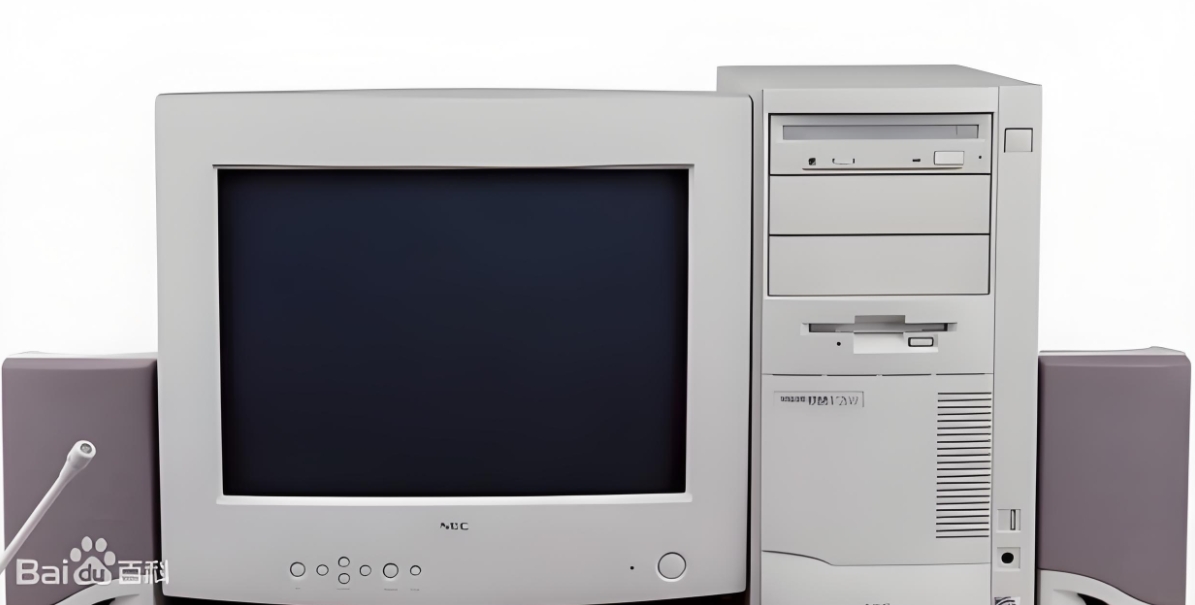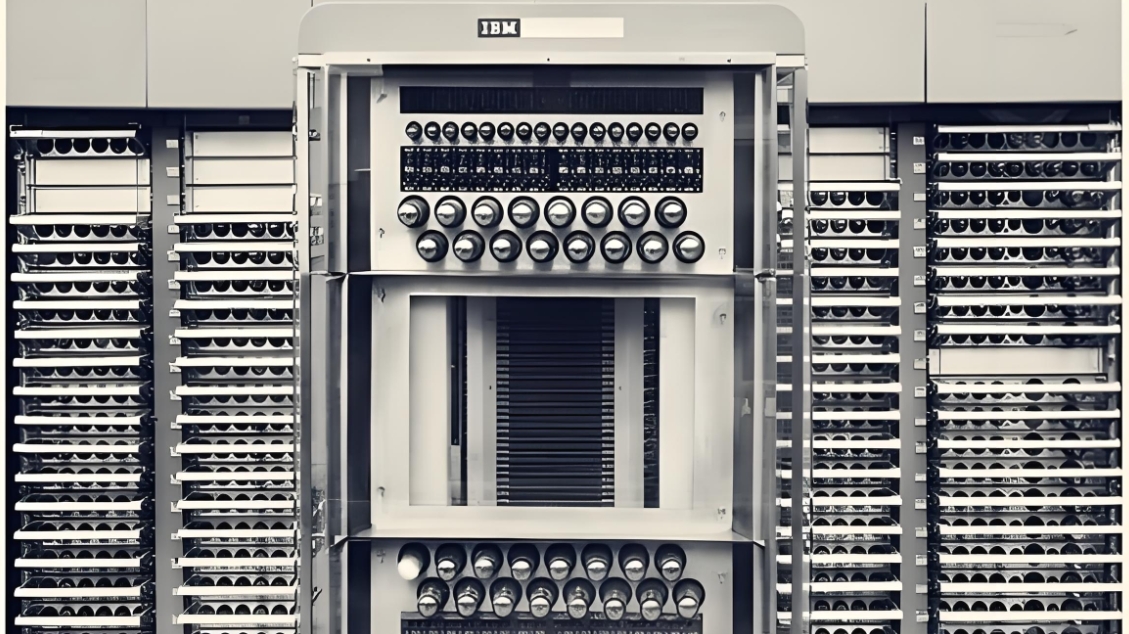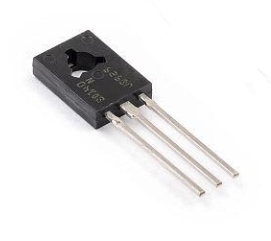The first computer: What electronic components were used?
2024-09-02 15:22:34 1478
Have you ever wondered how the early machines that underpinned the entire world of computing worked before modern computer technology? In an era before microprocessors and solid-state drives, how did the first computers achieve complex calculations?
Here, INFINITECH takes you back to the beginning of computer history to learn about the electronic components used in the first generation of computers, analyze how they shaped the development of computers, and detail the impact of these components in modern technology.

(Photo credit: Baidu Encyclopedia)
With the rapid development of computer technology today, it is hard for us to imagine life without computers. However, it all started with the first generation of computers. These early computers, though bulky and inefficient compared to modern computers, laid the foundation for modern computing technology.
I. Definition and background of the first generation of computers
The first generation of computers usually refers to computers manufactured during the 1940s and 1950s. During this period, shortly after World War II, military needs and the urgency of scientific research drove the development of electronic computers. The state of the art meant that the first computers were bulky, energy-intensive, and unreliable, but even so, they were among the most revolutionary inventions of their time. Its main feature is the use of the tube as the basic switching element to perform logical operations and signal amplification. Early first-generation computers used mercury delay lines as the primary storage method, and later gradually transitioned to magnetic core memory to improve data storage efficiency. Input/output devices initially relied on punch cards, and later devices such as paper tape and printers were introduced. In terms of software, programming mainly uses machine language or simple assembly language, and there is no operating system support, and users need to directly manage hardware resources. This type of computer is mainly used for scientific research, military applications, and complex computing tasks in large enterprises. Although they may seem inefficient and inconvenient today, they were crucial in laying the foundation for modern computers.
Second, the core component: vacuum tube
The core component of the first generation of computers was the vacuum tube, also known as the electron tube. A vacuum tube is an electronic component that controls current by using a stream of electrons in a vacuum to achieve signal amplification or switching functions. Inside the vacuum tube, a heating wire heats the cathode so that it emits electrons, which move towards the anode under the action of an electric field, and the number of electrons reaching the anode can be adjusted by controlling the grid voltage, thus controlling the current. This technique allowed vacuum tubes to play a signal amplification role in the first generation of computers, enhancing weak input signals into stronger output signals, and was essential for signal processing in early computers. In addition, by varying the gate voltage, vacuum tubes can also be used as switches, which are the basis for building logic circuits that allow computers to perform basic arithmetic and logic operations.

(Photo credit: Baidu Encyclopedia)
However, vacuum tubes also have their obvious limitations. They were large, and each tube required a considerable amount of space to place, resulting in the first generation of computers taking up a huge amount of space. In addition, vacuum tubes consume a lot of power and generate a lot of heat, requiring specialized cooling systems to maintain normal operation. In addition, the heating components in the vacuum tube lead to its short life and often need to be replaced, which brings challenges to the stable operation and maintenance of the computer. But vacuum tubes remained an integral part of the first generation of computers, enabling these machines to perform complex computing tasks and laying the groundwork for later technological innovations. Until the invention and popularization of transistors, vacuum tubes gradually withdrew from the stage of history.
Third, auxiliary components
In addition to vacuum tubes, the first computers used a range of other types of electronic components to perform complex computing tasks. These include:
Drum storage
Functions and applications: Magnetic drum memory was the primary storage device of early computers, which used a rotating magnetic drum to store data. The data is stored on the surface of the drum in the form of a magnetic signal, which is accessed by a read/write head.
Technical features: The access speed of magnetic drum memory is faster than that of electronic tubes, but it is still far lower than that of modern storage devices. It provides computers with the necessary data storage and processing power.
relay
Functions and Applications: Relays were used in the first generation of computers to control the switching of circuits. They play a key role in logic circuits and are used to enable fast switching of circuits.
Technical limitations: Relays are slow to respond and prone to wear during frequent operation, which limits the speed and reliability of the computer.
The cathode ray tube
Functions and Applications: CRTs was used to display output in the first generation of computers. They produced images on a screen via beams of electrons and were the primary way early computers interacted with users.
Technical features: CRTs provides intuitive display effects, but it is large, consumes a lot of power, and the image quality will gradually decline over time.
Mercury delay line
Functions and applications: Mercury delay lines are used for temporary data storage, using the propagation time of sound waves in mercury to preserve information. Mercury delay lines were used as part of the main memory in the first generation of computers to temporarily store data.
Technical features: Mercury delay lines have the advantages of lower cost and ease of manufacture, but the storage capacity is limited and the speed is slow.
Switches and buttons
Functions and applications: Used to manually enter data or instructions into the computer. In the first generation of computers, users entered programs or data through switches and buttons on the panel.
Technical features: These manual input devices are simple and intuitive, but less efficient and cumbersome to operate.
Pilot lamp
Function and application: The indicator is used to display the status of the computer and help users monitor the operation of the system. Display the working status of each part on the control panel of the computer.
Technical features: Indicators are usually simple bulbs or leds that respond quickly and show the current status.
Printed Circuit Board (PCB)
Functions and applications: Used to connect and organize various electronic components. In the first generation of computers, although not all systems used printed circuit boards, some advanced systems have begun to use simple PCBS to assemble components.
Technical features: Printed circuit boards can reduce the complexity of wiring, improve assembly efficiency, and contribute to standardization and mass production.
Fourth, the impact and significance of the first generation of computers
The first generation of computers had a profound impact on technology and society, and although they were relatively primitive in technology, they laid the foundation for subsequent technological advances and the development of modern information technology. They established the basic architecture of the electronic computer, including the concepts of input devices, processing units (cpus), memory, and output devices, and these design principles are still applicable today and are constantly optimized as technology advances. During World War II, these early computers helped solve complex ballistic calculations and advanced missile and rocket technology; After the war, they were also widely used in scientific fields such as weather forecasting and nuclear physics research, which promoted the progress of major scientific research. In addition, the first generation of computers began to play a role in the business world, especially in accounting, inventory management, and large-scale data processing, providing enterprises with unprecedented automation tools, thereby improving production efficiency.
The first generation of computers also gave birth to the discipline of computer science, driving the development of programming languages that, although very difficult in the early days, laid the foundation for later, more advanced languages and software engineering practices. More importantly, the advent of computers has changed the way people work, triggered discussions about employment and changes in social structure, and foreshadowed the coming social transformation in the information age. It can be said that without the first generation of computers, there would be no colorful information world today.
V. Technological evolution of the second generation of computers
The second generation of computers marked a significant leap in computer technology, which occurred mainly in the late 1950s to mid-1960s. The key evolution of computer technology during this period was the shift from the electron tube to the transistor.

The introduction of transistors made computers significantly smaller, lighter, and more durable, which not only reduced the cost of production and maintenance, but also increased the speed and reliability of computers. Computing speed has increased from thousands of operations per second in the first generation of computers to hundreds of thousands or more. In addition, the second generation of computers also introduced an operating system to provide users with better interactive interfaces and system resource management capabilities. In programming, this period began to use assembly language, greatly improving the efficiency and convenience of programming, while the emergence of procedure-oriented programming languages, such as FORTRAN and ALGOL, further simplified programming work, making it easier to write complex programs.

(Photo credit: Baidu Encyclopedia)
In terms of storage technology, the second generation of computers continued to develop magnetic core memory technology, allowing memory capacity to increase and data reading and writing speed to speed up, which provided support for larger scale data processing. These technological advances have allowed computers to move from the laboratory to a wider range of practical applications, including business, education, and research.
conclusion
The electronic components in the first generation of computers, such as tubes, drum memory, relays, and CRTs, are technically obsolete, but they are milestones in the history of computing. These components not only promote the progress of computer technology, but also provide valuable experience for the design and manufacture of modern computers. Understanding these early technologies helps us better understand the evolution of computers and how they shaped the technologies we rely on today.











